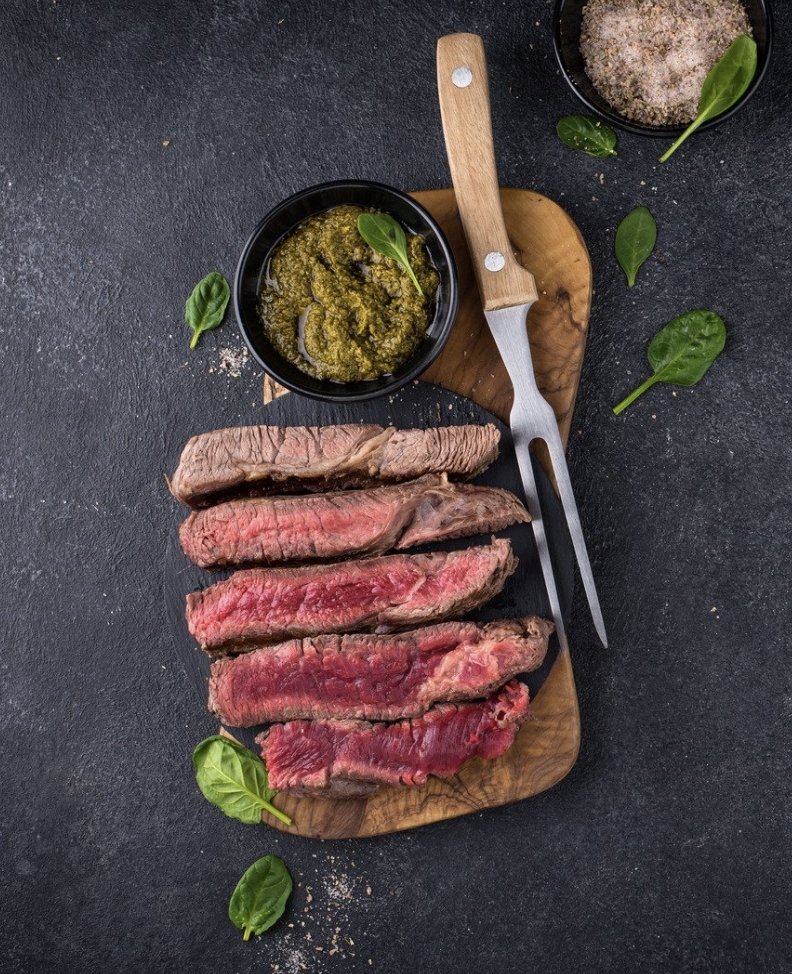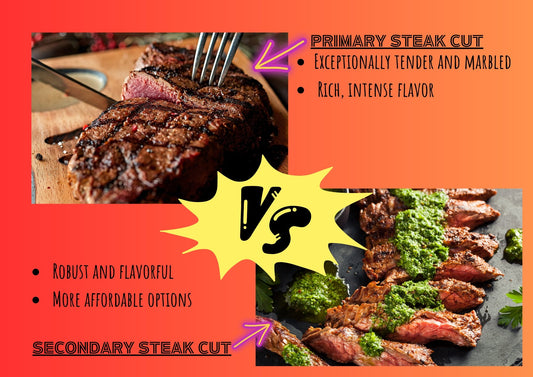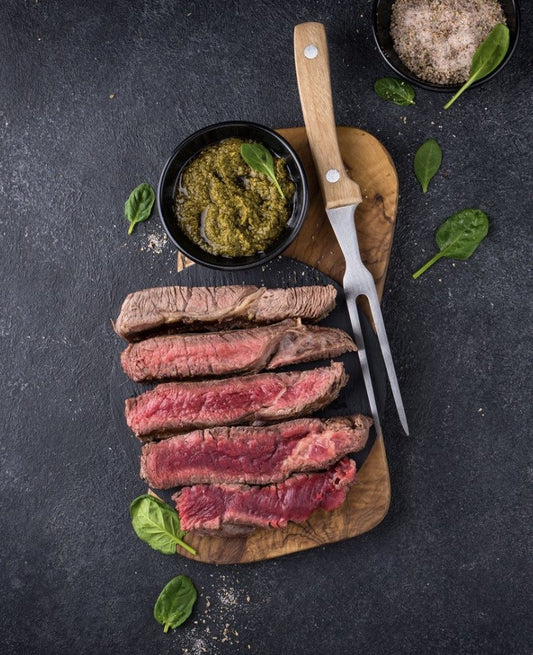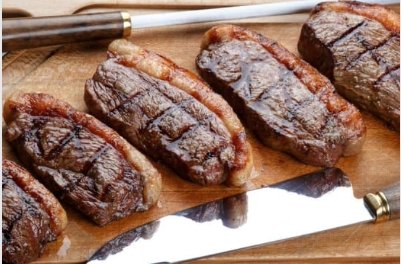Getting the Perfect Steak:
Understanding Steak Doneness
Imagine a sizzling steak, perfectly grilled to your desired level of juiciness and tenderness. There are different levels of doneness, ranging from rare to well-done. Each level has its characteristics, including colour, texture, and juiciness.
What is Steak Doneness?

Decoding the Concept of Steak Doneness
Steak doneness refers to the degree to which a steak is cooked, ranging from rare to well-done. Each level of doneness imparts characteristics to the meat, such as flavour, tenderness, and colour. Familiarising yourself with the different levels of doneness allows you to choose the perfect Steak to suit your liking.
Factors Affecting Steak Doneness
Gaining Insight into the Factors Influencing Steak Doneness
Several factors influence the cooking process of a steak. This includes cooking time, method, the thickness of the cut, and internal cooking temperature. Knowledge about these factors enables you to cook your steak to your desired level of perfection.
Rare Steak

Rare Steak: An Exquisite Choice
Rare Steak undergoes a quick sear at high heat, resulting in a centre that remains cool or a little warm. It boasts a bright red or pink centre and a delectable brown crust. A rare steak tantalises your taste buds with succulent juices, tender texture, and delicate flavours. For a rare steak, it is recommended to cook it to an internal temperature ranging from 125°F (51°C) to 130°F (54°C).
Medium-Rare Steak

Medium-Rare Steak: A Very Flavorful Delight
Steak enthusiasts often favour medium-rare doneness. It is cooked slightly longer than rare Steak and shows a warm red centre and a flavorful caramelised exterior. Medium-rare Steak is famous for its tenderness, juiciness, and rich taste. The ideal internal temperature for medium-rare Steak falls between 130°F (54°C) and 135°F (57°C).
Medium Steak

Medium Steak: Striking the Perfect Balance
A medium steak exhibits a warm pink centre and a discernibly browned exterior. Medium Steak is cooked longer than medium-rare Steak. It strikes a balance between tenderness and a well-cooked texture. While somewhat less tender than rarer steaks, medium Steak remains juicy and flavoursome. The recommended internal temperature for medium Steak ranges from 135°F (57°C) to 145°F (63°C).
Medium-Well Steak

Medium-Well Steak: Approaching Well-Done Territory
Medium-well Steak showcases a slight pinkness in the centre. It will slowly change into a grey-brown shade. It undergoes more extended cooking than medium Steak, resulting in a firmer texture. Medium-well Steak gives a good dining experience, although it is less juicy than rarer steaks. To achieve medium-well doneness, aim for an internal temperature ranging from 145°F (63°C) to 155°F (68°C).
Well-Done Steak

Well-Done Steak: Thoroughly Cooked
Well-done Steak is cooked thoroughly and displays a uniform grey-brown colour throughout. Achieving this level of doneness entails cooking the Steak longer at a lower heat. Well-done steaks possess a firmer texture and are comparatively less juicy than rarer cuts.The internal temperature of a well-done steak ranges from 160°F (71°C) and beyond.
Mastering Doneness Control:
Insider Tips for Cooking Your Steak to Perfection.
- Use a meat thermometer for precise cooking and to avoid overcooking or undercooking.
- Familiarise yourself with each doneness level's recommended cooking times and temperatures.
- Adjust cooking times based on the thickness of the Steak.
- Allow the Steak to reach room temperature before cooking to ensure even cooking.
- Use the "finger test" to assess the Steak's doneness by comparing its firmness to different parts of your hand.
The Significance of Resting

Resting: The Key to Enhancing Steak Quality
Resting the Steak after cooking is an often overlooked but vital step. Allowing the Steak to rest for a few minutes before slicing or serving helps to even the distribution of juices, resulting in a more juicy steak.
Optimal Cooking Methods for Each Doneness Level
Matching Techniques for Steak Perfection
Various cooking techniques can be employed to achieve the desired level of doneness:
- Rare: Quick sear on high heat, grilling, or sous vide.
- Medium-Rare: Sear and finish in the oven, grilling, or sous vide.
- Medium: Sear and finish in the oven, reverse searing, or grilling.
- Medium-Well: Extended cooking on lower heat, reverse searing, or grilling.
- Well-Done: Prolonged cooking on low heat, braising, or slow cooking.
Sauces and Accompaniments for Different Doneness Levels
Enhancing Your Steak Experience: Perfect Pairings
The doneness of your Steak influences the ideal sauces and side dishes to complement it. Consider the following recommendations:
- Rare and Medium-Rare: Lighter sauces, such as chimichurri or béarnaise, paired with roasted vegetables or fresh salads.
- Medium: Classic steak sauces like peppercorn or mushroom, served with mashed potatoes or sautéed spinach.
- Medium-Well and Well-Done: Bolder sauces like barbecue or steak sauce, accompanied by baked potatoes or creamed corn.
Avoiding Overcooking and Undercooking
Preventing Cooking Mishaps
Overcooking or undercooking a steak can diminish its flavour. To avoid this:
- Use a meat thermometer for accurate temperature assessment.
- Experimenting with cooking times and temperatures can meet your preferences.
- Allow the steak to rest after cooking to account for carryover cooking.
Dispelling the Myth of "Bloody" Steak

Setting the Record Straight
People commonly choose Well-Done as their preferred doneness due to the "Blood" in the Steak. The red liquid observed in a steak is not blood but a combination of water and myoglobin, a protein in muscle tissue. Understanding this fact will foster a deeper appreciation for Steak.
Secrets to Perfect Cooked Steak
Unveiling Culinary Excellence
- Source high-quality steaks from reputable suppliers for the best flavour.
- Season the Steak with salt and pepper before cooking to enhance its natural taste.
- Preheat your cooking surface or grill to achieve a delectable crust.
- Experiment with different seasonings and marinades to add extra layers of flavour.
- Allow the steak to rest before slicing or serving to maintain its juiciness.
Conclusion
Mastering Steak Doneness: The Path to Culinary Greatness
The doneness level of a steak has a significant influence on its taste, texture, and look. Using suitable cooking techniques can help you achieve your personal doneness preference. Exploring different doneness levels lets you understand the balance of tenderness, juiciness, and flavour.
“Achieving your preferred doneness level is a 'steak' in the right direction”
In conclusion, understanding steak doneness allows you to prepare perfectly cooked steaks that provide an excellent dining experience. Following the tips, techniques, and recommendations outlined in this article, you can confidently create steaks that align with your preferences. Remember, practice makes perfect, so don't hesitate to experiment and discover your preferred doneness level. Enjoy the satisfaction of savouring expertly cooked steaks!




